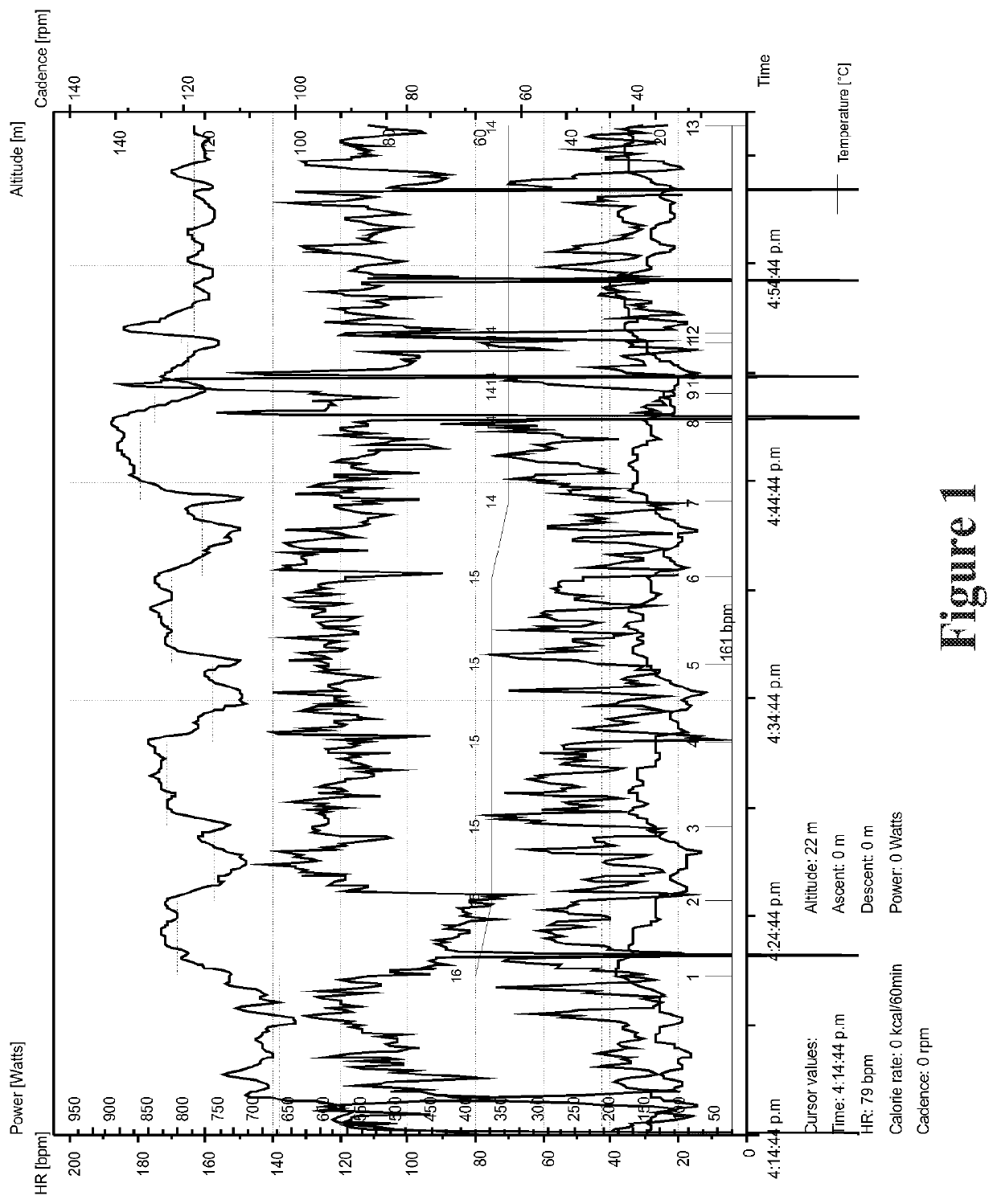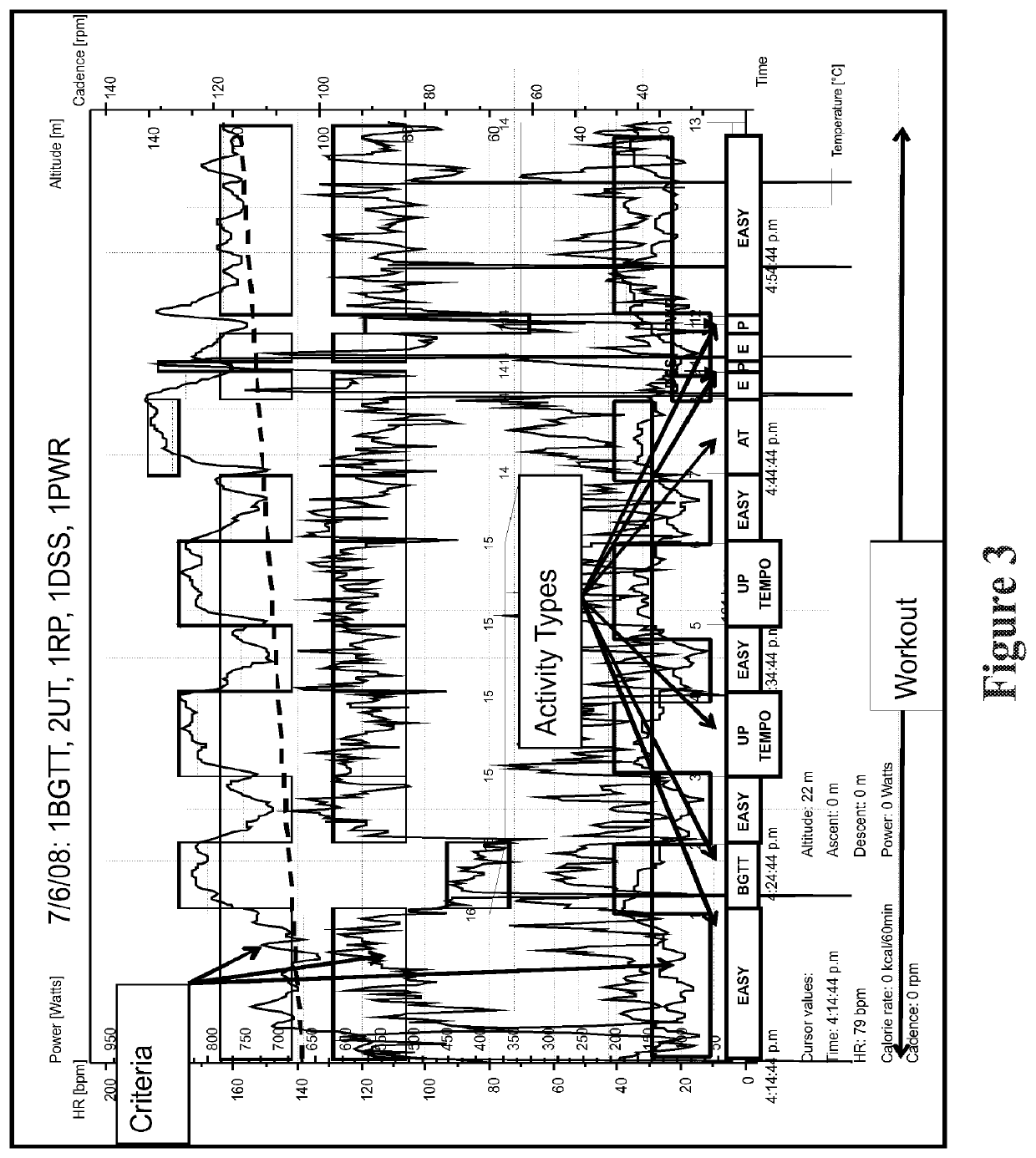Automated Prescription of Activity Based on Physical Activity Data
a technology of physical activity and data, applied in the field of exercise and/or activity monitoring, can solve the problems of ineffective exercise for hundreds of millions of people around the world, inability to clearly interpret collected data and provide solutions, and difficulty in interpreting currently available recorded raw data that is provided to users for their own analysis
- Summary
- Abstract
- Description
- Claims
- Application Information
AI Technical Summary
Benefits of technology
Problems solved by technology
Method used
Image
Examples
embodiment (
Preferred Embodiment(s)
[0250]The system and method of the invention may be implemented using the following classification system. This implementation should not be considered as limiting the scope of the invention but rather a preferred embodiment of the underlying classification concept defined above.
[0251]4. Activity Types: Multi Parameter Classification of Activity
[0252]4.1 Minimum Activity Classification Example
[0253]The following is a list of the minimum activities to be classified by the classification system of one embodiment of the invention. The following example uses running Activity Types:[0254]a. Easy Activity Type: This is running within the speed thresholds of 8-10 km / hr. In this example the threshold criteria for effort may include heart rate instead of speed which would be a user heart rate (HR) of 65-75% of their maximum heart rate. Power may also be used. In addition to any combination of the above parameters and their threshold criteria, a flat terrain criterion m...
PUM
 Login to View More
Login to View More Abstract
Description
Claims
Application Information
 Login to View More
Login to View More - R&D
- Intellectual Property
- Life Sciences
- Materials
- Tech Scout
- Unparalleled Data Quality
- Higher Quality Content
- 60% Fewer Hallucinations
Browse by: Latest US Patents, China's latest patents, Technical Efficacy Thesaurus, Application Domain, Technology Topic, Popular Technical Reports.
© 2025 PatSnap. All rights reserved.Legal|Privacy policy|Modern Slavery Act Transparency Statement|Sitemap|About US| Contact US: help@patsnap.com



